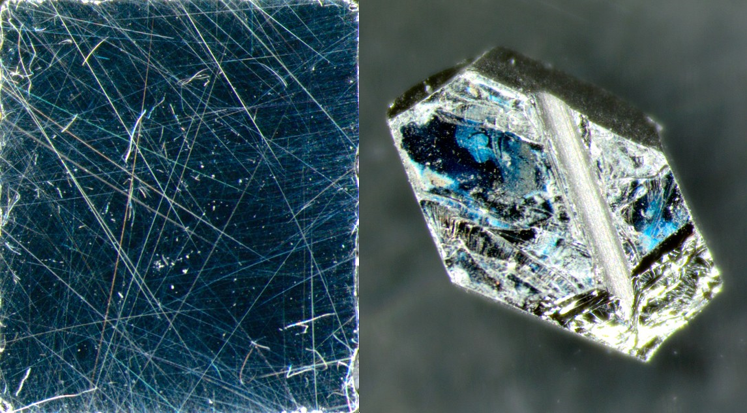
ΑΙhub.org
Researchers use neural networks to shed light on hidden order problem

In 1985 researchers at the University of Leiden published a paper describing the phase transitions of the heavy fermion alloy uranium ruthenium silicide (URu2Si2). That work sparked numerous studies into this fascinating material, with the phase transition at 17.5K proving particularly puzzling. Despite decades of research, the nature of this phase transition is still unclear.
This March a collaboration of researchers from Cornell University, Florida State University, Los Alamos National Laboratory, Max Planck Institute, Dresden, and Leiden University shed further light on the problem by combining resonant ultrasound spectroscopy and machine learning. Their work was published in Science Advances.
“In uranium ruthenium silicide, we have no idea what the electrons are doing in the hidden order state,” said Ramshaw, the paper’s senior author. “We know that they don’t become magnetic, we know that they don’t become superconducting, but what are they doing? There are a lot of possibilities – orbital order, charge density waves, valence transitions – but it’s hard to tell these different states of matter apart. So the electrons are ‘hiding,’ in that sense.”
Resonant Ultrasound Spectroscopy (RUS) is a technique that relies on the fact that solid objects have natural frequencies at which they vibrate when mechanically excited. The natural frequency depends on the elasticity, size, and shape of the object. The great advantage of this technique is that the entire elastic tensor is obtained from a single crystal sample in a single rapid measurement.
The authors used RUS to examine the symmetry properties of a single crystal of URu2Si2 and how these properties change during the hidden order phase transition at 17.5K. Most phase transitions are accompanied by a change in symmetry properties. For example, atoms in solids tend to form an organised structure, whereas those in liquids are more random. These changes in symmetry aren’t always obvious, and can be difficult to detect experimentally.
“By looking at symmetry, we don’t have to know all the details about what the uranium is doing, or what the ruthenium is doing. We can just analyze how the symmetry of the system looks before the phase transition, and how it looks after”, Ramshaw said. “And that lets us take that table of possibilities that theorists have come up with and say, ‘Well, these are not consistent with the symmetry before and after the phase transition, but these are.’ That’s nice, because it’s rare that you can make such definitive yes and no statements.”
Ultrasound data is normally modelled using wave mechanics. However, the sample in this study was too small (due to the purity required a larger sample was not feasible) and had too much uncertainty for a straightforward wave-mechanics solution. The experimentalists turned to machine learning expert Eun-Ah Kim and her doctoral student Michael Matty, who used neural networks to analyze the data and uncover underlying patterns.
“Machine learning is not only for image-like data or big data,” Kim said. “It can dramatically change the analysis of any data with complexity that evades manual modelling.”
“It’s hard, because the data is just a list of numbers. Without any sort of method, it has no structure, and it’s impossible to learn anything from it,” explained Matty. “Machine learning is really good at learning functions. But you have to do the training correctly. The idea was, there is some function that maps this list of numbers to a class of theories. Given a set of numerically approximated data, we could do what is effectively regression to learn a function that interprets the data for us.”
Ten different neural networks were trained on 20,000 sets of simulated RUS data for the phase transition. The networks learned a function that mapped the jumps in ultrasonic resonances at a phase transition to one of two classes, corresponding to either a one-component order parameter or two-component order parameter. The networks were trained with simulated data that encompassed a broad range of possible experimental scenarios. During the training phase the team compared the network results to those calculated using the elastic wave function. Once the team were confident that the level of agreement was high enough they were able to apply their algorithm to experiments where the elastic wave function calculation could not be used due to the nature of material sample.
The results from this work strongly indicate that the phase transition has a one-component order parameter, thus eliminating roughly half of the more than 20 likely explanations for the hidden order. The team have not yet solved the URu2Si2 riddle, but they have created an approach for tackling data analysis problems in experimental physics. Their algorithm can be applied to other quantum materials and techniques, most notably nuclear magnetic resonance (NMR) spectroscopy, the fundamental process behind magnetic resonance imaging (MRI). They also plan to use the new technique to study uranium telluride, a potential topological superconductor that could be used as a material for quantum computing.
Read the research paper to find out more.









